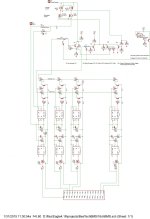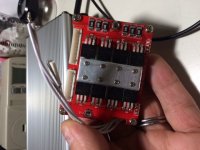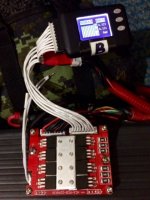hardym
100 W
I'm having trouble with a BMS. It seems that many times after hooking up, the BMS seems to be in a "locked up" state, wont charge or discharge. At first I thought that they were DOA, and just broke, but one came back to life. I'd like to understand the problem better, so I created a schematic (attached below). But some of the transistor controller parts don't make any sense. Does anyone have any experience with this type of circuit or have a better schematic?
edit: By the way, I disconnected the cell LV/HV detection lines and the thermal cutoff lines and still get the same problem.
edit2: I updated the schematic to show the load switchs as pfets rather than nfets
The Schematic is similar to one of these:
http://www.bestechpower.com/592v16spcmbmspcbforli-ionli-polymerbatterypack/PCB-D167.html
edit: By the way, I disconnected the cell LV/HV detection lines and the thermal cutoff lines and still get the same problem.
edit2: I updated the schematic to show the load switchs as pfets rather than nfets
The Schematic is similar to one of these:
http://www.bestechpower.com/592v16spcmbmspcbforli-ionli-polymerbatterypack/PCB-D167.html






